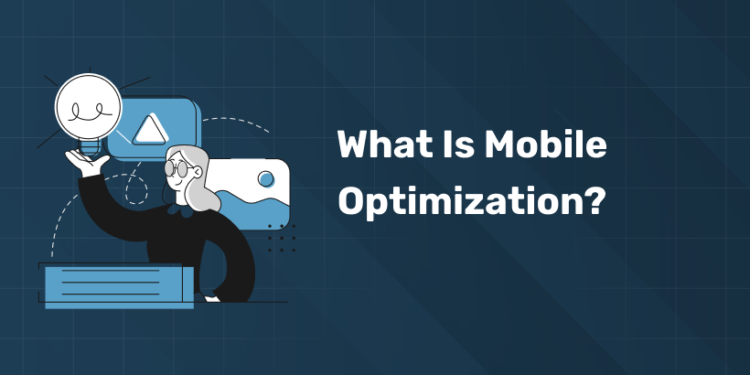Table of Contents
- Mobile optimisation ensures websites and digital content are user-friendly and high-performing on smartphones and tablets.
- It directly impacts SEO rankings, conversion rates, and customer retention. Google’s mobile-first indexing means mobile optimisation is no longer optional but a necessity.
- Common strategies include responsive design, fast-loading pages, simplified navigation, and optimised visuals.
- Mobile optimisation is deeply linked with user experience (UX) and customer journey. Learning how to master mobile optimisation can future-proof digital marketers’ careers.
Introduction to Mobile Optimization
As the digital landscape changes, mobile optimisation has become a key part of any digital marketing strategy. More than half of all web traffic now comes from mobile devices and businesses can no longer ignore the importance of optimising their websites and marketing for mobile users. Whether you’re a digital marketer, business owner or web developer, understanding mobile optimisation is crucial for a seamless user experience, SEO and conversion rates.
In this blog post we’ll explore what mobile optimisation is, why it’s important and how you can implement mobile friendly strategies to improve your digital marketing.
What is Mobile Optimisation?
1: What is the primary goal of SEO (Search Engine Optimization)?
Mobile optimisation is the process of adjusting and enhancing your website, content and digital marketing to give the best possible experience for users on mobile devices such as smartphones and tablets. It’s about ensuring your website’s design, layout and functionality is fully compatible with mobile screens and loads quickly, is easy to navigate and provides a smooth user experience.
As mobile internet usage continues to rise, mobile optimisation is more important than ever. Users expect websites to be fast, responsive and easy to use regardless of the device they’re using. Mobile optimisation is important for user experience and SEO as search engines like Google rank mobile friendly websites higher.
Achieve exceptional results with Digital marketing techniques! Enroll Here!
Become an AI-powered Digital Marketing Expert
Master AI-Driven Digital Marketing: Learn Core Skills and Tools to Lead the Industry!
Explore CourseWhy Mobile Optimization Matters for Your Website’s Success
- Mobile Traffic Majority: With mobile traffic surpassing desktop traffic, websites need to cater to mobile users. Without mobile friendly designs, sites will lose a big chunk of their audience.
- Better User Experience: Mobile optimization makes browsing easier by improving readability, navigation and accessibility which means better engagement and user satisfaction.
- SEO and Ranking: Search engines especially Google prioritizes mobile friendly websites in rankings. Mobile optimization affects SEO so it’s part of any digital marketing strategy.
- Conversion and Revenue: A good mobile experience encourages users to engage, to convert, whether it’s filling out a form, buying or contacting the business.
- Competitive Advantage: An optimized mobile experience gives you an edge over competitors. Websites that are mobile responsive stand out from those that aren’t.
Key Components of Mobile Optimization
- Responsive Design: A responsive layout adapts to different screen sizes, a uniform experience across devices. This is the base of mobile optimization.
- Page Load Speed: Mobile users expect fast loading times. Slow loading pages means user frustration and high bounce rates. Compress images, use caching and minimize code for better performance.
- User Friendly Navigation: Mobile screens are smaller so clear and intuitive navigation is a must. Prioritize simplicity, use visible buttons and reduce clutter.
- Readable Content: Optimized font sizes, line spacing and content layout for small screens. Avoid long blocks of text.
- Touch Friendly Elements: Make sure buttons and links are big enough to tap without error. Avoid elements too close together to prevent accidental clicks.
- Mobile-Specific Features: Features such as click-to-call buttons, location-based services, and maps enhance the mobile user experience.
Best Practices for Effective Mobile Optimization
- Use Accelerated Mobile Pages (AMP): AMP speeds up page load, good for user experience. Google likes AMP which can help with mobile search rankings.
- Minimise Pop-Ups: Pop-ups annoy users. Ensure pop-ups don’t cover content and only use when necessary.
- Above the Fold Content: Put important content at the top so users can find what they need without scrolling.
- Optimise Images and Videos: Compress media files to reduce load times. Use responsive images that scale to screen size without losing quality.
- Test Across Devices: Test your website on different devices regularly to make sure it works and looks good. Google’s Mobile-Friendly Test is handy for this.
Become an AI-powered Digital Marketing Expert
Master AI-Driven Digital Marketing: Learn Core Skills and Tools to Lead the Industry!
Explore CourseMobile Optimization for E-Commerce Websites
E-commerce sites benefit most from mobile optimization. Here’s why:
- Better Shopping Experience: Users are browsing products, comparing prices and reading reviews on the go. A mobile optimised site makes this experience better.
- Higher Conversions: Simple navigation, touch friendly elements and easy payment options = higher conversions.
- Mobile Payment Integration: Integrate payment methods designed for mobile like Google Pay, Apple Pay and Paytm for Indian users.
Mobile friendly checkout and secure payment options are key to e-commerce success. This ensures smooth transactions and happy customers.
Mobile SEO: Boost Your Rankings Through Mobile Optimization
- Optimize for Local Search: Mobile users search for local businesses. Make sure your website is optimised for local SEO with correct contact details, location info and relevant keywords.
- Use Structured Data: Structured data or schema markup helps search engines understand the content on your site. This shows up in local search results.
- Use Mobile Relevant Keywords: Mobile search behaviour is different from desktop. Focus on localised keywords and conversational phrases as users search differently on mobile.
- Mobile-First Indexing: Google uses mobile-first indexing, so it prioritises the mobile version of your website. Make sure your mobile site is identical to your desktop site in terms of content and structure.
- Optimise Metadata for Mobile Users: Write short and sweet meta titles and descriptions that match mobile search results to increase mobile CTR.
Tools and Resources for Mobile Optimization
- Google’s Mobile-Friendly Test: Google’s tool tests your site on mobile and gives you suggestions to improve.
- Hotjar: This tool tracks user behaviour with heatmaps to see how mobile users interact with your site.
- PageSpeed Insights: Google’s PageSpeed tool tests load times and gives you suggestions to speed up mobile.
- BrowserStack: Test across different devices and browsers to make sure your website works everywhere.
- Entri’s Digital Marketing Course: If you want to learn more about mobile optimisation and other digital strategies, check out Entri’s Digital Marketing Course for in-depth training on SEO, analytics and user engagement.
Common Mobile Optimization Mistakes to Avoid
- Ignoring Mobile-First Indexing: With Google’s mobile-first indexing, not optimising for mobile will hurt rankings big time.
- Slow Load Times: Mobile users expect fast load times. Big images, uncompressed files and unoptimised code will slow pages down.
- Unresponsive Buttons: Small buttons or links that aren’t touch friendly will frustrate users and increase bounce rates.
- Intrusive Pop-Ups: Pop-ups that block content will frustrate users and get you penalised by Google.
- Ignoring Mobile-Specific Features: Mobile has unique features like location-based services and click-to-call which enhance the user experience.
- Not Testing on Multiple Devices: Websites look different on different devices. Test regularly on various screen sizes to ensure consistency.
Real Life Examples of Mobile Optimisation Success
- E-Commerce Giants: Companies like Amazon and Flipkart have nailed mobile optimisation, making it easy for users to shop, checkout and view products.
- Google Search: As a search engine, Google updates its mobile-friendly algorithm regularly to rank mobile-optimised sites higher in search results.
These examples show how mobile friendly design can lead to more user engagement and better SEO.
Learn the fundamentals of digital marketing! Join the Classes today!
Master Mobile Optimization with Entri’s AI-powered Digital Marketing Course
To succeed in mobile optimization and other key digital marketing areas Entri’s AI-powered Digital Marketing Course is the tool for you. This course covers in-depth mobile optimization techniques, responsive web design, SEO best practices and more. By enrolling in the course you’ll gain the skills to optimize websites for mobile, improve user experience and stay ahead of the curve in the 2025 digital marketing landscape.
Conclusion
Mobile optimization is no longer optional – it’s necessary for a good user experience, SEO and conversions in today’s mobile world. Digital marketers must create mobile friendly websites that load fast, are easy to navigate and provide a seamless experience for users on all devices. By following best practices and continuously optimizing for mobile marketers can create websites that meet user expectations and deliver better business outcomes.
If you want to upskill and master mobile optimization Entri’s AI-powered Digital Marketing Course is the place to start. The course is hands on and practical so you’ll be ready to tackle the challenges of mobile marketing and digital optimization in 2025 and beyond.
Frequently Asked Questions
What is Mobile Optimization?
Mobile optimization is the process of adjusting a website’s design, layout, content, and functionality to ensure it displays well and functions smoothly on mobile devices. This includes adapting to various screen sizes, making buttons touch-friendly, and reducing loading times to improve user experience for mobile users.
Why is Mobile Optimization Important for SEO?
Mobile optimization impacts SEO significantly because search engines like Google use mobile-first indexing. This means Google primarily considers the mobile version of a site for ranking. Optimized mobile experiences can lead to better rankings, increased visibility, and enhanced user engagement.
What are some best practices for mobile optimization?
Some best practices include using responsive design, compressing images for faster load times, prioritizing above-the-fold content, minimizing pop-ups, and using touch-friendly buttons and navigation. Testing across different devices and browsers also ensures consistent user experience.
What tools can help with mobile optimization?
Several tools aid in mobile optimization, such as Google’s Mobile-Friendly Test for assessing mobile compatibility, PageSpeed Insights for optimizing load times, and Hotjar for tracking user behavior. BrowserStack allows testing across devices to ensure consistency, and AMP can help improve load speed on mobile pages.
How can I measure the success of my mobile optimization efforts?
Key metrics to track include mobile bounce rate, average session duration, conversion rates, and mobile page load times. You can monitor these using tools like Google Analytics, which provides insights into user behavior on mobile versus desktop.
How long does it take to optimize a website for mobile?
Typically, basic mobile optimization takes 2-4 weeks. However, larger websites might require 2-3 months for comprehensive optimization. The timeline depends on your site’s complexity and optimization goals.
What's the difference between mobile-friendly and mobile-optimized?
A mobile-friendly website simply works on mobile devices, while a mobile-optimized website is specifically designed to provide an optimal mobile experience with faster loading times, better navigation, and content adapted for mobile users.
How often should I update my mobile optimization?
Review and update your mobile optimization quarterly, or whenever you make significant changes to your website. Regular testing and optimization ensure you maintain optimal mobile performance.
How does mobile optimization affect conversion rates?
Well-optimized mobile sites typically see 2-3x higher conversion rates compared to non-optimized sites. In India, where mobile shopping is prevalent, good optimization can increase conversions by up to 200%.













